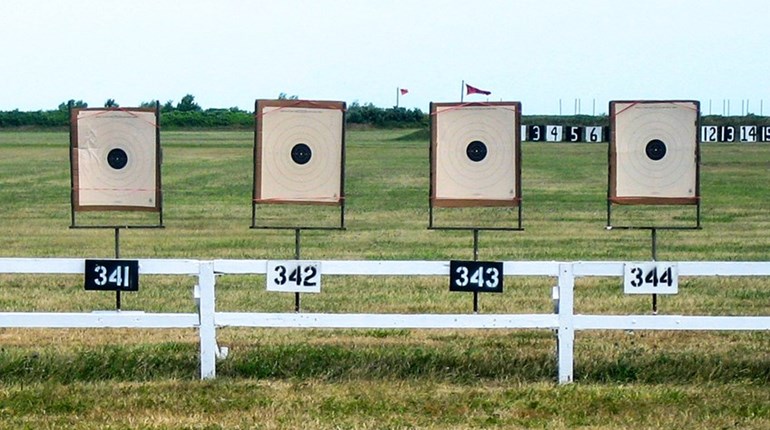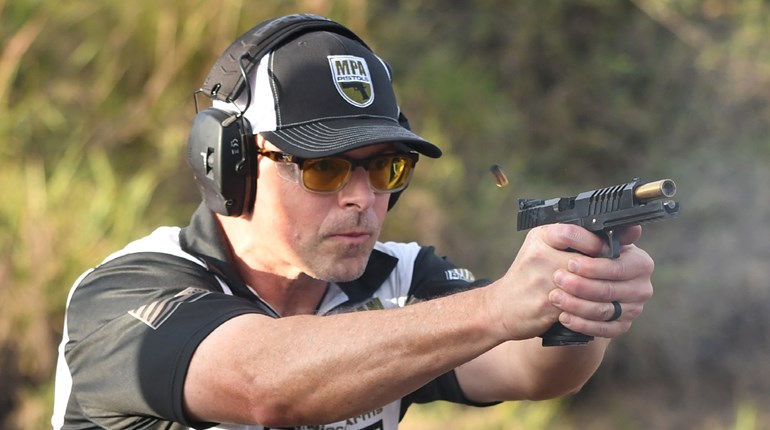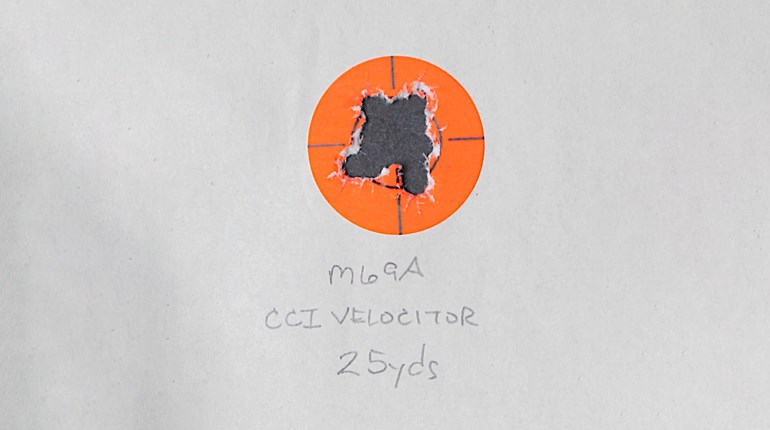** When you buy products through the links on our site, we may earn a commission that supports NRA's mission to protect, preserve and defend the Second Amendment. **

Last week, we covered two of the ways that barrels are enhanced to improve accuracy: cryogenic barrel treatment and molybdenum disulfide treatment (say that three times fast). Today, we'll cover two other methods: fire lapping, barrel fluting and barrel tuning.
Fire lapping is a barrel-lapping process that uses bullets impregnated with abrasive material fired through the barrel to lap the bore. Fire-lapping kits come in several forms: a set of abrasive compounds that must be embedded into the bullet jacket, fully impregnated bullets ready for loading and ammunition loaded with impregnated bullets. In most cases, a variety of abrasive grits is offered, allowing the shooter to lap the barrel of the gun with a grit as fine—or as course—as needed. Coarse grits are recommended for older, pitted or corroded bores, followed by a series of shots impregnated with progressively finer grits.
Fire lapping is claimed to reduce metal fouling and improve accuracy. These benefits have been observed in corroded or worn bores and in some factory barrels with rough bores.
There is very little benefit to lapping match barrels, however, as such barrels are normally hand-lapped before leaving the factory. Many custom barrelmakers, in fact, specifically advise against fire lapping.
It is not uncommon to find a measurable lengthening of the throat after fire lapping. Aggressive fire lapping can also actually change bore dimensions. Thus, the fire-lapping process should be used with caution. Fire lapping is a treatment best restricted to older, worn barrels that have not responded to less drastic therapies such as cleaning, recrowning or a change in ammunition.
Barrel fluting is the machining of longitudinal grooves into the outside surface of a barrel, and it has long been used as a means to lighten a barrel or increase its length while maintaining its weight. By increasing surface area, fluting may improve barrel stiffness and cooling rates. Fluting can be done in any of a number of grooves, groove widths and groove depths. Six- and eight-flute groove patterns are the most popular.
Let us address two common misconceptions about barrel fluting. First, some believe that the process of cutting the flutes in a barrel introduces new stress that will require heating for stress relief. This is false. The consensus of barrelmakers is that properly cut barrel fluting will not introduce new stress into a barrel.
Secondly, some believe that fluting adversely affects accuracy. Experience with both hunting and match-fluted barrels has shown this to be untrue.
Barrel tuning is one way to improve the performance of a barrel showing lackluster accuracy. Essentially, it's the process of cutting a small amount from the muzzle—as little as .05 of an inch may suffice—and recrown it. Experience has shown the slight change in barrel length and fresh crown often "tunes" the vibratory patterns in the barrel for improved accuracy.
Another barrel-tuning device is Browning's Ballistic Optimizing Stabilizing System (B.O.S.S.). This factory-installed device is threaded onto the muzzle and consists of a combined muzzle brake and tuning weight. By adjusting the B.O.S.S. and noting any change in accuracy, the shooter can, by trial and error, determine an optimal setting for a particular load.
Many other barrel-tuning devices operate on the same general principle: a weight located at a particular location in relation to the muzzle. Clearly, changes in barrel harmonics can improve accuracy significantly. In a sense, barrel-tuning devices make the barrel a better tuning fork.
Fire lapping is a barrel-lapping process that uses bullets impregnated with abrasive material fired through the barrel to lap the bore. Fire-lapping kits come in several forms: a set of abrasive compounds that must be embedded into the bullet jacket, fully impregnated bullets ready for loading and ammunition loaded with impregnated bullets. In most cases, a variety of abrasive grits is offered, allowing the shooter to lap the barrel of the gun with a grit as fine—or as course—as needed. Coarse grits are recommended for older, pitted or corroded bores, followed by a series of shots impregnated with progressively finer grits.
Fire lapping is claimed to reduce metal fouling and improve accuracy. These benefits have been observed in corroded or worn bores and in some factory barrels with rough bores.
There is very little benefit to lapping match barrels, however, as such barrels are normally hand-lapped before leaving the factory. Many custom barrelmakers, in fact, specifically advise against fire lapping.
It is not uncommon to find a measurable lengthening of the throat after fire lapping. Aggressive fire lapping can also actually change bore dimensions. Thus, the fire-lapping process should be used with caution. Fire lapping is a treatment best restricted to older, worn barrels that have not responded to less drastic therapies such as cleaning, recrowning or a change in ammunition.
Barrel fluting is the machining of longitudinal grooves into the outside surface of a barrel, and it has long been used as a means to lighten a barrel or increase its length while maintaining its weight. By increasing surface area, fluting may improve barrel stiffness and cooling rates. Fluting can be done in any of a number of grooves, groove widths and groove depths. Six- and eight-flute groove patterns are the most popular.
Let us address two common misconceptions about barrel fluting. First, some believe that the process of cutting the flutes in a barrel introduces new stress that will require heating for stress relief. This is false. The consensus of barrelmakers is that properly cut barrel fluting will not introduce new stress into a barrel.
Secondly, some believe that fluting adversely affects accuracy. Experience with both hunting and match-fluted barrels has shown this to be untrue.
Barrel tuning is one way to improve the performance of a barrel showing lackluster accuracy. Essentially, it's the process of cutting a small amount from the muzzle—as little as .05 of an inch may suffice—and recrown it. Experience has shown the slight change in barrel length and fresh crown often "tunes" the vibratory patterns in the barrel for improved accuracy.
Another barrel-tuning device is Browning's Ballistic Optimizing Stabilizing System (B.O.S.S.). This factory-installed device is threaded onto the muzzle and consists of a combined muzzle brake and tuning weight. By adjusting the B.O.S.S. and noting any change in accuracy, the shooter can, by trial and error, determine an optimal setting for a particular load.
Many other barrel-tuning devices operate on the same general principle: a weight located at a particular location in relation to the muzzle. Clearly, changes in barrel harmonics can improve accuracy significantly. In a sense, barrel-tuning devices make the barrel a better tuning fork.







































